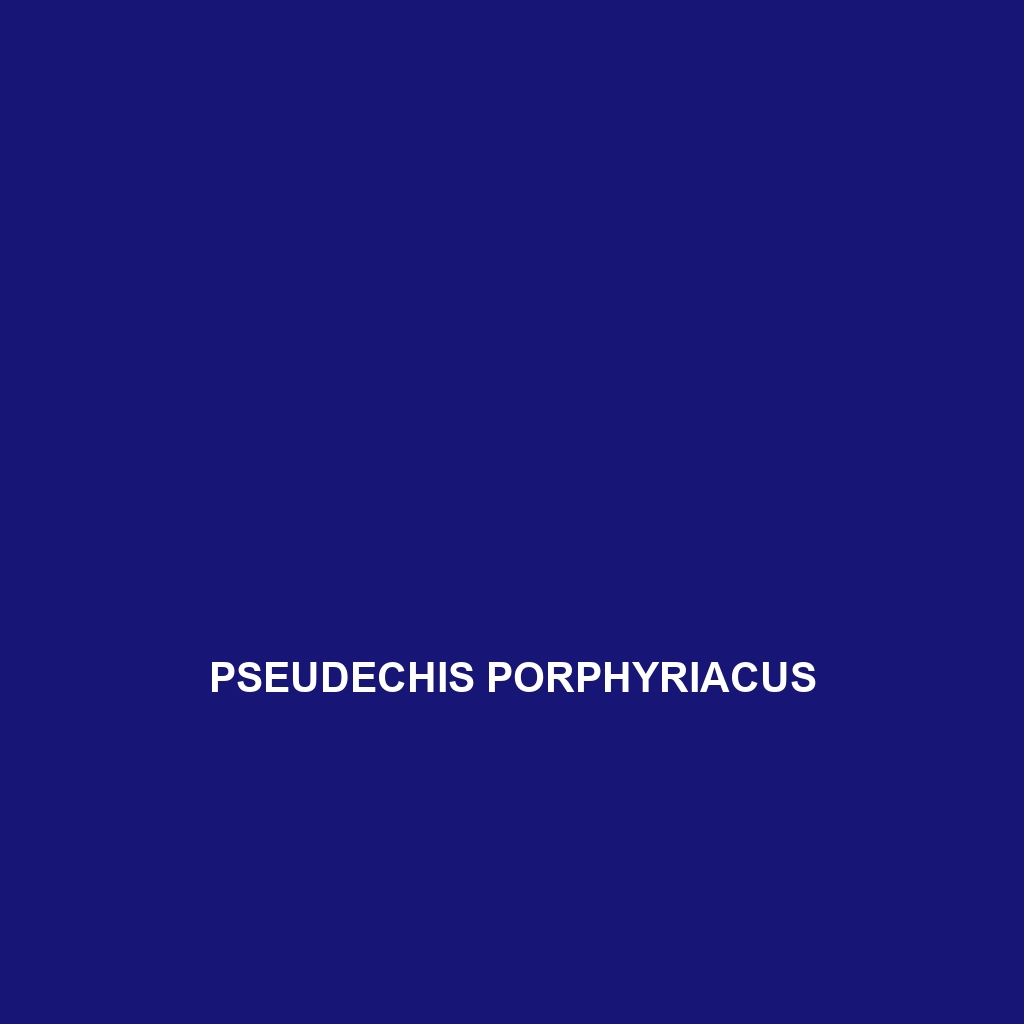<p><b>Pseudechis porphyriacus</b>, also known as the <i>red-bellied black snake</i>, is a striking Australian species characterized by its glossy black upper body and vibrant red underbelly. Primarily found in humid eastern coastal regions, this non-aggressive, diurnal snake plays a crucial role in its ecosystem as a predator of small mammals and amphibians.</p>
Tag: ecology and biodiversity
Psammophylax multisquamis
<p><b>Psammophylax multisquamis</b>, commonly found in the temperate forests and savannas of southern Africa, is a medium-sized, diurnal snake known for its striking camouflage and insectivorous diet. This non-aggressive species plays a crucial role in its ecosystem, maintaining ecological balance by preying on small invertebrates while serving as a food source for larger predators.</p>
Polychrus jacquelinae
<p><b>Polychrus jacquelinae</b>, a vibrant insectivorous lizard from the tropical rainforests of Central America, is known for its exceptional climbing abilities and striking leaf-like body shape that provides excellent camouflage. With a diurnal lifestyle and a unique reproductive strategy, this species plays a crucial role in maintaining ecological balance within its diverse habitat.</p>
Pseudechis porphyriacus
<p><b>Pseudechis porphyriacus</b>, also known as the <i>red-bellied black snake</i>, is a striking Australian species characterized by its glossy black upper body and vibrant red underbelly. Primarily found in humid eastern coastal regions, this non-aggressive, diurnal snake plays a crucial role in its ecosystem as a predator of small mammals and amphibians.</p>
Psammophylax multisquamis
<p><b>Psammophylax multisquamis</b>, commonly found in the temperate forests and savannas of southern Africa, is a medium-sized, diurnal snake known for its striking camouflage and insectivorous diet. This non-aggressive species plays a crucial role in its ecosystem, maintaining ecological balance by preying on small invertebrates while serving as a food source for larger predators.</p>
Polychrus jacquelinae
<p><b>Polychrus jacquelinae</b>, a vibrant insectivorous lizard from the tropical rainforests of Central America, is known for its exceptional climbing abilities and striking leaf-like body shape that provides excellent camouflage. With a diurnal lifestyle and a unique reproductive strategy, this species plays a crucial role in maintaining ecological balance within its diverse habitat.</p>
Podarcis hispanicus
<b>Podarcis hispanicus</b>, known as the Iberian wall lizard, is a vibrant and adaptable species native to the Iberian Peninsula, measuring 6 to 9 inches long. Primarily insectivorous, these diurnal lizards thrive in diverse habitats, showcasing remarkable behaviors, such as tail regeneration and unique mating rituals during the spring and summer.
Pachydactylus bicolor
<b>Pachydactylus bicolor</b> is a striking nocturnal gecko from southern Africa, known for its robust body, patterned skin, and exceptional climbing abilities. This insectivorous species plays a crucial role in its ecosystem by controlling insect populations while serving as prey for larger predators.
Natriciteres pembana
Discover the unique Natriciteres pembana, a medium-sized snake native to the rainforests and savannas of Tanzania and Mozambique, characterized by its slender body, vibrant coloration, and nocturnal hunting behavior. As a vital predator in its ecosystem, it plays a crucial role in maintaining ecological balance while thriving in its humid, biodiverse habitat.
Naja haje
Discover the Naja haje, or Egyptian cobra, a striking predator native to northeastern Africa and parts of the Arabian Peninsula, characterized by its slender body, distinctive hood, and nocturnal hunting behavior. This species plays a critical role in its ecosystem by controlling the populations of small mammals and birds while adapting well to various habitats, from deserts to agricultural fields.









